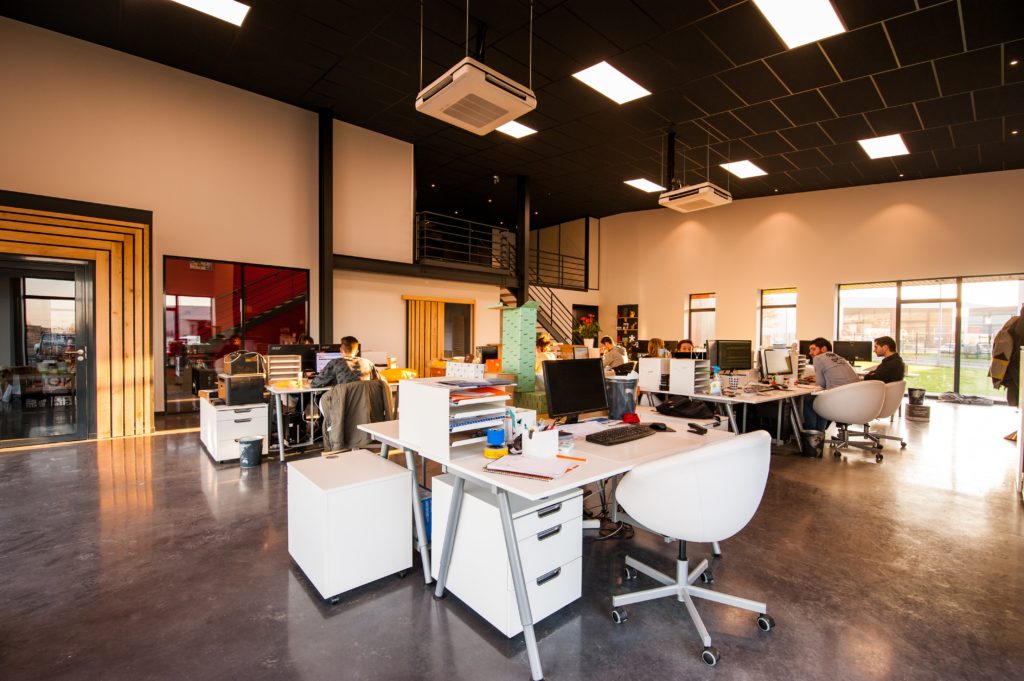When it comes to attracting and retaining the best talent, savvy companies know that they need to be competitive with more than just salaries and the standard perks, such as company-sponsored healthcare plans and paid vacation time. In fact, modern companies such a Google, Facebook, Pixar and more — commonly known as being among the very best places to work — are famous for providing their employees with workspaces that promote not only creativity and innovation, but also collaboration and morale.
And for good reason, too. The architect of Google’s Silicon Valley headquarters, Clive Wilkinson, said it best when he noted that “75 to 80 percent of America is cubicle land. Cubicles are the worst — like chicken farming. They are humiliating, disenfranchising, and isolating. So many American corporations still have them.” Harsh words, yes — but not entirely untrue. By comparison, today’s modern and employee-centric office designs are the very opposite. Rather than closed off walls, spaces and cubicles with bad lighting, they focus on open concept spaces with natural light and a casual, comfortable feel.
What’s more, in addition to a sleek and modern design aesthetic that promotes creative thinking, smart companies are also enticing their employees with attractive office perks, such as free food, drinks, and even recreation and entertainment. But is one better than the other? Does one seem to resonate more soundly with tenants?
The short answer is that if depends on who you ask. Many companies feel that making physical spaces more comfortable and flexible are most important, bringing in movable and comfortable furniture, lots of natural light, and inspired designs. Read on to find out more.
The Case for Physical Space
One of the people in this camp is Christa Tilley, Creative Producer at Glossier. She reports that working in Glossier’s open and airy offices with plenty of natural light actually makes her feel healthier every day — not to mention the benefits the physical space brings to her workflow. “In the closed door office I used to work in, I didn’t know who was in charge of things and where to find people. Now, we all sit together on comfortable couches that feel like we’re in a home and we’re really able to get down to it,” she says.
Of course, while this type of environment is great for collaboration, Tilley admits that sometimes quiet places are necessary, in order to get certain jobs or tasks done. “Sometimes there’s menial administration stuff I just need to get done but when I’m in the office, we’re so hands-on and communicating so much, I don’t have time to sit down and pay invoices, look at contracts and do more menial, less time-sensitive tasks even though they’re just as important to do,” she admits.
But What About the Perks?
And then there are those who feel that office perks are most important and that all perks are not created equal. In fact, they would go so far as to purport that offering perks has become a competitive sport among the top corporations and organizations, with each one fighting it out to see who can offer the best and newest perks.
While some perks might not always lead to improved productivity, nearly all of them help to build and foster community – and genuine familiarity always allows for greater and better collaboration. Experts agree that there are four characteristics of office perks that are genuinely effective:
- They inspire curiosity
- They help you see why your work matters
- They help you blaze a trail forward
- They help you stay sane, stable, and satisfied
By being deliberate with both the office perks and physical space design you offer your employees, you’ll see job performance, and morale, increase drastically.






